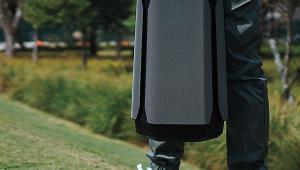How about a review of Formation Duo? :-) .......
Bowers & Wilkins Formation Wireless Surround Speaker System Review Page 2
Performance
My initial listening with the system was done without surrounds, since the Flex was only introduced around the time I began work on the review, arriving several weeks after the Bar and Bass. I had no serious reservations about the system's performance with music, which was far better than you might expect from a soundbar, though unlikely to send serious audiophiles to Elysium. I suspect that the Formation Duo is more likely to satisfy those of us predisposed to sit down and listen to music with no other distractions.

When the Bar receives a two-channel source such as streamed or disc-based music, it generates a faux center channel to make full use of its left, center, and right speakers. If Flex surrounds are part of the setup, the Bar will also generate faux surround channels for two-channel material. While left-right spread (inevitable with a soundbar), I appreciated the system's open, detailed, but not unnaturally bright balance with both music and movies. There was some comb-filtering on the Bar that altered the response slightly as I moved away from the ideal center seat, but that's inevitably the case with soundbars that position their drivers horizontally.
Movie soundtracks with the full system were conveyed surprisingly effectively even for this listener accustomed to a far larger, more complex home theater setup. The Formations were satisfying on a wide range of films, from the animated, music-heavy Sing (hardly a classic, but a loads of fun) to the dynamic Jurassic World: Fallen Kingdom (uneven, but if you like dinosaurs...). The latter even includes a number of awesome (though clearly overwrought) choral passages that came through beautifully.
The Formation Bass also held its own when needed. In my large room it appeared to peak slightly at around 50Hz with some usable response under 40Hz, which, while hardly true subwoofer territory, added at least an octave to the usable extension of the Bar alone. The Bass won't shake the walls or scare the kids (or the neighbors), but it provided solid support to all the films I watched and never sounded anemic.

There were a few issues that impacted my otherwise genuine enjoyment in listening to the Formation system. Sibilants were a bit too pronounced on female vocals on about 30 percent of the CDs I sampled (5 out of 16). On a few cuts from one disc in particular, The Story of My Life: Lea Salonga Live from Manila, some of the sibilants splashed over from the centered vocalist into the left channel. Bright percussion and guitar strings could also be a little harsh. I'd never heard these issues from the same recordings on more conventional systems. A company rep I spoke with duplicated these anomalies on another sample of the Bar using the same music, particularly the Lea Salonga album, suggesting this wasn't a sample problem. But it wasn't a consistent concern for music, and rarely impacted movies on Blu-ray disc.
Ergonomics
The Formation system only supports Dolby Digital decoding. While that's not an issue for video playback when a TV's optical digital output is connected to the Bar—broadcast/cable TV channels and video apps all use Dolby Digital—most Blu-ray discs have DTS-HD Master Audio soundtracks. To get around this, Bowers & Wilkins recommends setting a disc player to output linear PCM (LPCM). While this worked, on some movies mastered at a low level (looking at you, recent Disney releases!), the maximum available volume was far too quiet.

On at least two occasions during my review the Flex surrounds went silent. The entire system also went silent at least twice after I made a routine adjustment or two. Once, the left and right channels on the Formation Bar, the Flex surrounds and the Bass it's possible to adjust the level of the Flex surrounds, no such option is available for the Bar's center speaker.
Overall, apart from a limited subwoofer actually stopped working entirely, though the center channel continued to play. I could always clear these problems by doing a factory reset of the entire system, but while the reset only took about five minutes, having to do so repeated times is a nuisance most users wouldn't tolerate.
I found that the Flex surrounds were often lower in level than the Formation Bar and the only way to correct for it was to lower the Bar's volume. But since the latter's volume was marginal on many films to begin with, reducing its level further wasn't a real option.
Most critically, the Formation Flex pair appeared to be duplicating the sound in the front left and right channels rather than acting as proper surrounds. This was the case with both Dolby Digital and DTS soundtracks (converted by the player to PCM). In The Flight of the Phoenix, for example (DTS-HD Master Audio), Johnny Cash sings I've Been Everywhere over the opening credits and his voice was at full level not only in the fronts but also in the surrounds. The film's subsequent dialogue could also be clearly heard in both the surround and the front channels. (On a properly operating system, the dialogue in this film, and on most films, should be heard exclusively from the front except when there's a specific reason for it to be behind the audience.) This problem was audible with every movie I tried. And while it wasn't unpleasant when seated at a normal distance from the surrounds (and I suspect most listeners might not even think there was a problem), it was still wrong.

When I tried connecting my disc player's optical digital output directly to the Formation Bar (not passing the sound through the TV first), the Flex surrounds now operated properly with both Dolby Digital and DTS soundtracks— as long as I had the player's output set to Dolby Digital. That's because the player in this configuration converts all audio formats to plain-vanilla Dolby Digital, which the Formation Bar can accept and process. This setup also provided considerably higher overall gain than any of the above scenarios.
What these results might suggest is that my 2017 LG E7 OLED TV was delivering only 2.0 or 2.1 Dolby Digital from its optical digital output, the Formation system then generating its own center and surround signals with the latter dominated by the information in the left and right front channels. It also means that whatever you get will depend on the output of your TV and the settings available on your disc player. But I also tried connecting the Formations to two new 2019 TVs I had on hand that are capable of sending multichannel sound from their optical digital output with the same results.
Conclusion
While I appreciated the Formation system's basic sound quality on movies and music, I also encountered serious stability issues, with the system requiring frequent resets (this became more of an issue after the Formation Flexes arrived and were added). Also, getting accurate movie sound with the system will depend on the capabilities of a given TV's optical digital output, which can be unpredictable. I expect that the former issue can be addressed with firmware updates. But the latter is terra incognita, which is why I consider the Formation Bar's lack of an HDMI input to be a significant handicap in an otherwise stylish, good-sounding, and well-designed product.
- Log in or register to post comments































































